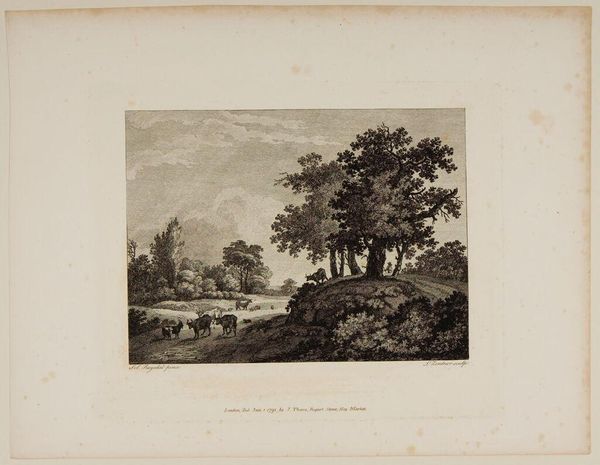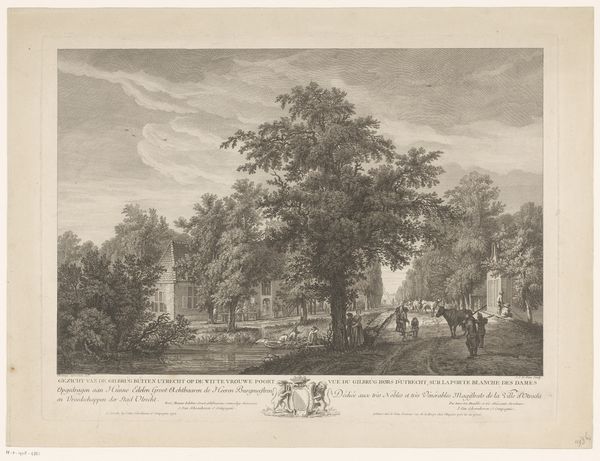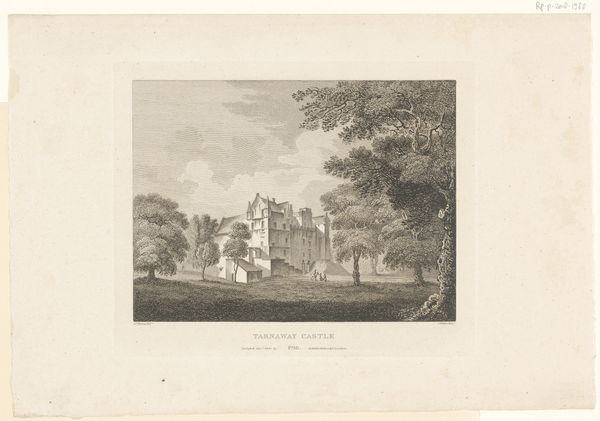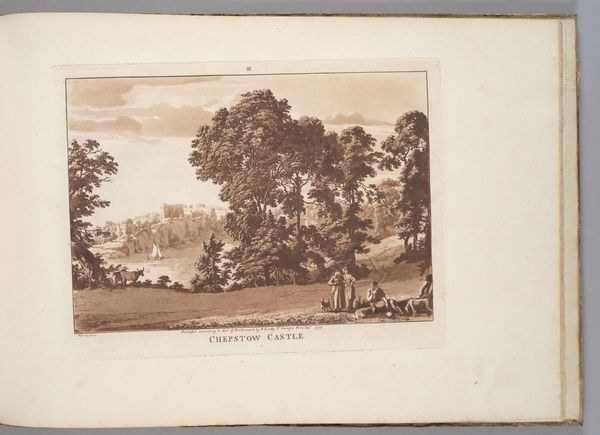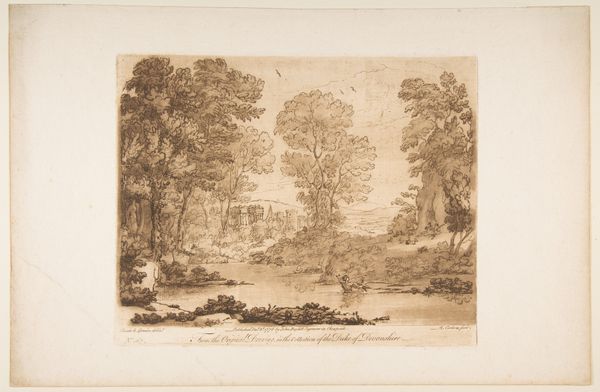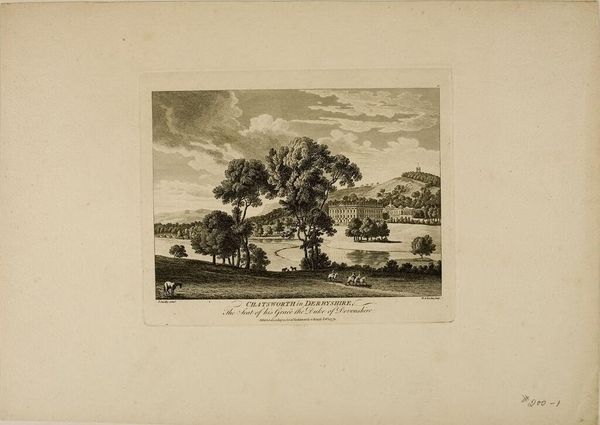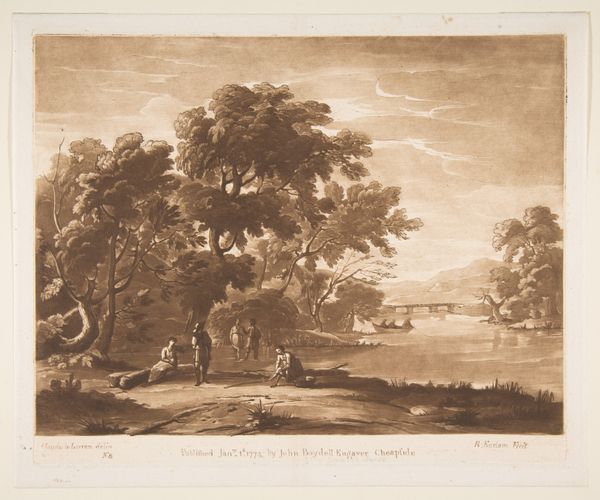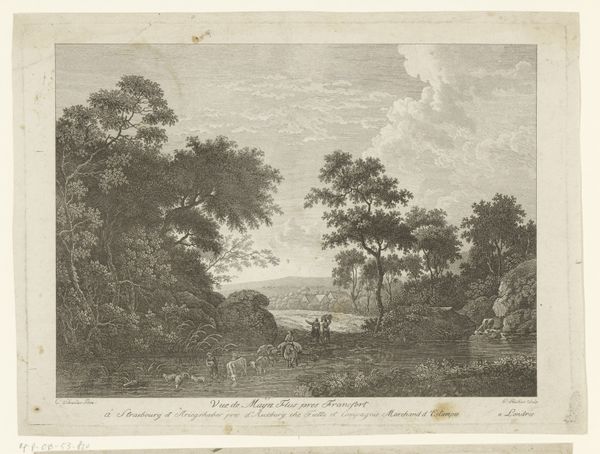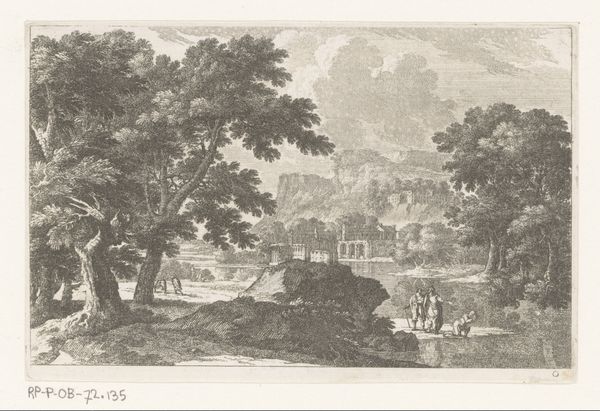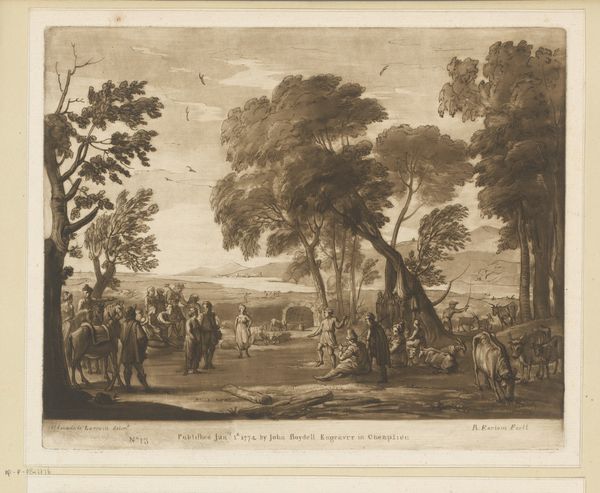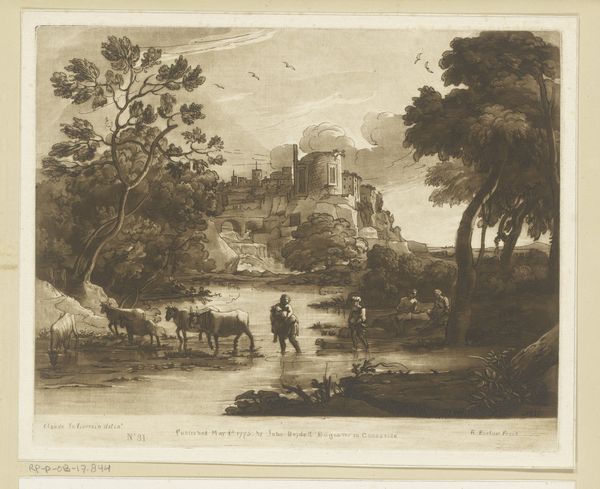
Dimensions: 237 × 314 mm (plate); 320 × 463 mm (sheet)
Copyright: Public Domain
Curator: Paul Sandby created this print, an etching on paper, in 1776. It's called "Chepstow Castle" and we’re fortunate to have it here at the Art Institute of Chicago. Editor: The landscape, rendered in sepia tones, projects an image of tranquility, but also… a very deliberate social hierarchy. There's almost a pastoral harmony imposed on the scene. Curator: Indeed, Sandby’s landscapes often acted as both aesthetic observation and social commentary. Chepstow Castle itself is a loaded symbol, a physical manifestation of Norman power. But notice the figures in the foreground? They're not labourers, they seem like well-to-do observers. Editor: Precisely! The contrast is striking. You have this imposing structure—a symbol of authority and conquest—juxtaposed with figures who appear to be leisured gentry. This immediately provokes a narrative, perhaps about class, access, or the way history itself is consumed. Do you see how the castle acts almost like a backdrop? Curator: And that backdrop speaks volumes, right? Chepstow Castle’s history, from its strategic role in the Welsh Marches to its gradual decline into picturesque ruin, highlights evolving power structures. By the 18th century, places like Chepstow were viewed through the lens of the Picturesque movement, where the appeal was in their ruined state. Editor: So, this print subtly participates in the consumption of history. The castle, once a tool of domination, has been reframed as scenery for the privileged few. And this is packaged neatly, as an affordable print…distributed widely. One must wonder what meaning different audiences derive from this particular image, as consumers in an art market Curator: I find it equally thought-provoking to observe how the aesthetic rendering normalizes such an obvious division. The beautiful composition makes us complacent, glossing over the implicit inequities. Editor: That's exactly where its power lies! It's a visually appealing and historically charged image, which encourages critical engagement with socio-political dynamics. And also highlights that, in this era, it’s a privilege to sit there and look. Curator: Absolutely. The artwork is both beautiful and complicated, which invites continuous interpretations through the centuries.
Comments
No comments
Be the first to comment and join the conversation on the ultimate creative platform.
